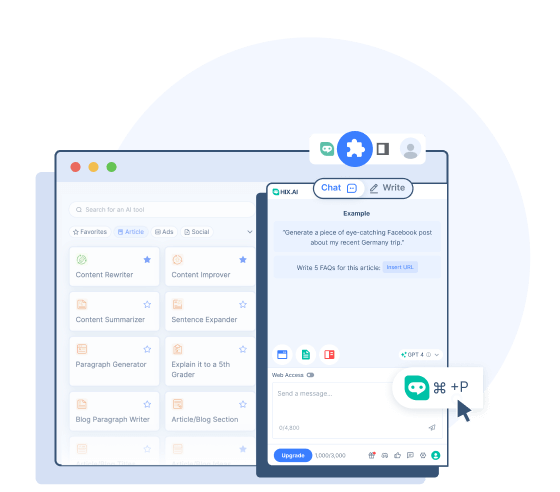Mastering report writing is crucial for interpreting trends and informing business decisions. Proper reports transform intricate and complex data sets into clear insights, guiding even those unfamiliar with the subject matter.
The art of report writing can be challenging to perfect, but this article aims to flatten that learning curve. Continue on for a detailed guide designed to enhance your skills in crafting well-structured, insightful reports.
What Are Reports?
Reports are documents that present a situation, project, or problem. They analyze the data related to the topic and offer conclusions or recommendations on dealing with a particular issue. The main purpose of a report is to inform the key stakeholders of a certain project during the development stages and to streamline their decision-making process.
Report writing is rather common in many scenarios. For example, if you work in a science lab, you often need to write scientific reports. Plus, there are school reports, marketing reports, and many other kinds of reports, depending on your environment. You’ve likely needed to make basic reports from a young age as a part of your homework without realizing it.
Here’s a more detailed overview of different types of reports:
- Business reports – A business report identifies and analyzes information useful for a particular business strategy. Some of the most common business reports include feasibility studies, marketing reports, SWOT analyses, and internal memos.
- Scientific reports – A scientific report usually contains research findings you normally find in science journals. The list includes case studies and research papers.
- Academic reports – An academic written report generally shows how well a student understands a specific topic. For example, professors and teachers can ask students to write reports on biographies, historical events, or books.
What Are the Main Elements of a Report?
Before you learn how to write a report, you should first familiarize yourself with the main elements of report writing:
- Title – A title of a written report is a statement that tells your readers what the report is about.
- Table of contents – This part of a report lists the individual sections of the report, so people can navigate the content more easily.
- Summary – You use this part to sum up your report. A standard report summary highlights any recommendations, solutions, or problems related to the topic. You may even notify the audience about any limitations of your content. In scientific research, this is the abstract.
- Introduction – The introduction establishes the significance of the topic you’re analyzing and defines the issues being discussed. Some reports can combine the summary and introduction in one section.
- Body – This is where you’ll do most of your writing. Each statement made in the body is usually underpinned by credible references or other types of evidence.
- Conclusion – The conclusion is pretty much the same as the summary. You typically use the conclusion to bind the body together and remind the reader of any recommendations from the summary.
- Appendices – The last part of your report lists the materials and references used during the research process.
How Do You Write an Effective Report?
Whether you want to learn how to write a business report or any other type of report, the following 5-step guide will point you in the right direction:
Step 1 – Write the Title
The first thing you should do to write a report properly is come up with a suitable title. The good news is that you don’t have to be super-creative here. Remember – you’re writing for a professional audience, not readers of fiction content.
Therefore, don’t waste time trying to make the title catchy. The only thing you should worry about is making it concise and clear. It should communicate to your readers the key information about the topic, so they know from the get-go what they’ll learn from the report.
Alternatively, take advantage of the HIX AI Writer's research title generator to efficiently create the ideal title for your report. With our tool, you can skip the struggle of crafting a title and generate one that's brief, descriptive, and perfectly aligned with your content's focus.
Step 2 – Research
Now that the first step to writing a report is over, it’s time to take a short break. During this time, you want to collect as much information as possible about the topic. The reason is simple – each claim or stat in the body will need to be backed by a credible source.
Conducting research shouldn’t be a problem if you’re writing a report within your organization. For instance, if you’re a marketing professional who needs to inform the owners about last month’s sales, the data should be readily available. The same goes if you’re a doctor because you should have access to patient records.
However, researching topics for academic reports is generally trickier. You typically need to find scientific literature on your own. Doing so can be challenging, especially if your topic is narrow and you can’t find many authors who have explored similar aspects of the subject matter.
No matter how long it takes you, you should only find reputable sources when writing reports. These include books from acclaimed authors and peer-reviewed research papers/case studies.
To speed up your search, look up similar reports and check out the research used by the writers. Go through the list of references and find those applicable to your report.
If that doesn’t help, consider joining a library.
Step 3 – Write the Body
The body is where your ability to write reports will truly be tested. It’ll comprise 90% of your report, which is why you need to pay special attention to this element.
Throughout your writing, be sure to incorporate various data points collected during the research stage. The information will contextualize your claims and provide the reader with more value.
Also, don’t make standalone claims. For instance, if you say your company’s sales dropped 10% last month, explain the potential causes and figure out what your enterprise did differently up to a particular date. This will give the audience a better understanding of the latest trends and make your report easily digestible.
Additionally, it’s essential to include positive and negative information to help the owners make an informed decision. It also positions you as a transparent professional who delves deep into the heart of enterprise problems.
Thorough claims aren’t critical for business reports only. For example, supporting your findings with data in an academic paper showcases your attention to detail and the high-level research you conducted.
Step 4 – Write the Summary, Conclusion, and Table of Contents
The next step of report writing is to create your summary. Although it’ll appear on the first page of your report, you should write it last because it contains the findings of your research and recommendations. Only when you analyze all the data can you make a detailed conclusion about a particular topic, which is why this part should be saved for last.
If you need a compelling summary or conclusion in no time, you should definitely try HIX AI Writer's paragraph generator. It effortlessly compiles the main topic as well as the essential findings and perspectives into a polished, concise narrative, ensuring the key points of your report are expressed and delivered effectively.
When writing the summary for your report, you should always highlight the main points of the report in one to two paragraphs. Explain the main cause of the trends mentioned in the content and their implications. Also, recommend the right action based on the information.
Even if your report is data-heavy, you shouldn’t exceed the recommended length. Keep in mind that this is a blurb of your report. It should quickly tell the readers what the report is about rather than overwhelm them with claims from the body.
Follow a similar approach when writing your conclusion. But instead of repeating the methods used during your research, use this section to list the main implications, findings, and/or next steps. Make sure the conclusion creates a lasting impression on your readers without introducing new points.
Once the summary and conclusion are ready, don’t forget to list the table of contents at the beginning of your report for easy navigation. This will help readers quickly locate different sections and understand the structure of your report.
Step 5 – Appendices & Proper Referencing
In the process of crafting your report, it's essential to uphold the integrity and academic rigor of your work through proper referencing. Every statistic and statement should be backed by established and credible sources, thereby reinforcing the reliability of your analysis.
When conducting research within an organization, like checking last month's sales figures if you're a marketer, data should be promptly available internally. However, in academic realms, sourcing information often involves wading through scientific literature independently, which can be daunting if the topic is obscure and scarcely covered by other researchers.
Irrespective of the duration, it's vital that your references are reputable. This includes scholarly works and peer-reviewed research, which lend weight and credibility to your report. To expedite the process, you may review similar reports for potential sources, peruse their references, or even access library databases for a broader array of scholarly materials.
As you conclude your report, remember to include Appendices, and cite all sources accurately, organize them methodically with proper format, aligning with your field's referencing standards. This meticulous approach to citing sources not only reflects the thoroughness of your research but also establishes your report's credibility and academic value.
Step 6 – Revise & Final Edits
The first draft of your written report is finished, but you shouldn’t submit or present the report immediately. Instead, you want to revise the content for the right written report format, readability, and accuracy.
You can also simplify your revision process using HIX AI Writer's integrated tools. Our grammar checker helps refine your text by eliminating errors from punctuation to misspellings and capitalization, and our plagiarism remover ensures your report's content is original and free from unintentional duplication.
During the revision process, whether you do so yourself or hire a third-party proofreader, here are some of the primary elements you should pay attention to:
- Formatting errors
- Citations and references
- Poor punctuation
- Misspelled and improperly capitalized words
- Inappropriate tenses or vocabulary choice
- Unsuitable tone
- Flow issues
Tips on How to Do a Report Properly
Keep the following tips in mind and you’ll know how to create a report faster the next time you need one:
- Use clear, concise language throughout the whole report writing process. Reports use a formal, impersonal tone. Evocative, promotional language is inappropriate.
- Consider your audience. Avoid abbreviations and jargon if your readers are familiar with them. If you need them to keep your text succinct, introduce them by using the full name or explanation, followed by the jargon or abbreviation in parentheses.
- Incorporate graphs and images whenever appropriate to help your audience follow the content.
- Stay focused on the main topic from the first till the end. Don’t stray from the central idea of your report.
Conclusion
Writing an effective report is an expert balancing act of condensing complex data into digestible content that informs and engages a broad audience. While the task of report writing may appear challenging, our comprehensive guide has broken it down into clear-cut steps so that you can significantly ease the process and enhance the result.
With dedication and meticulousness, your reports will not only communicate critical insights but also establish your proficiency and credibility, fostering trust and authority in your professional domain.



